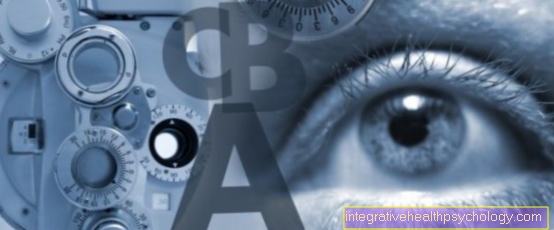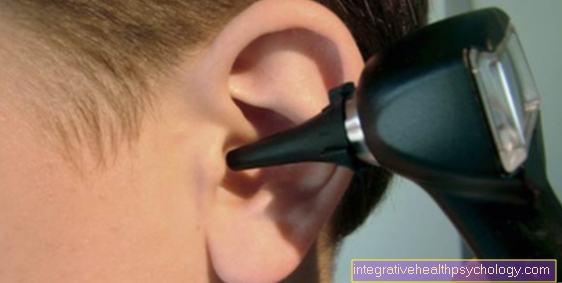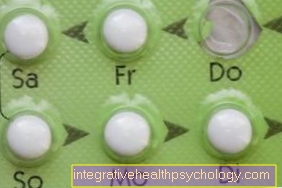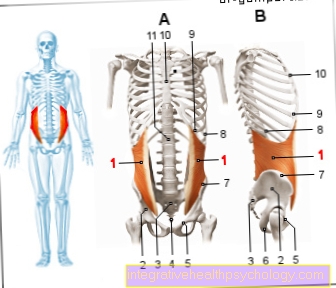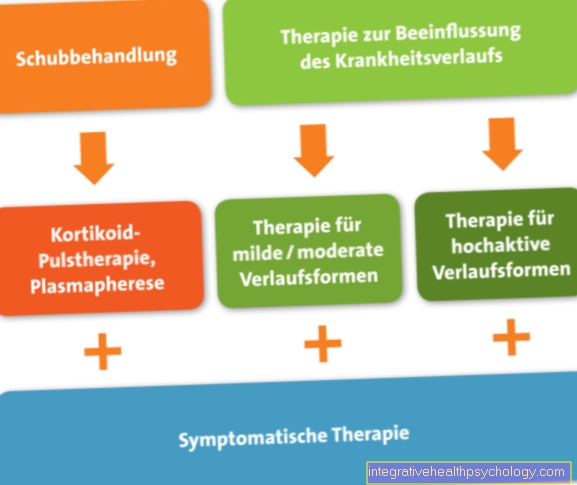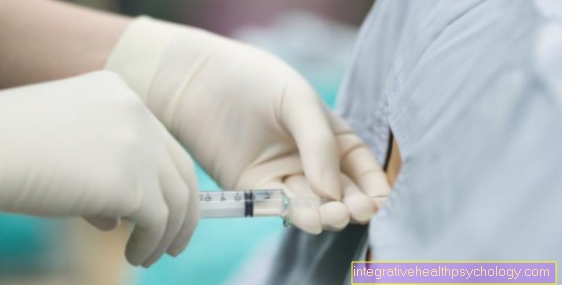TIVA
introduction
TIVA stands for Total Intravenous Anesthesia and describes anesthesia that is only performed with drugs that are given directly into the vein. No gaseous medication that is administered to the patient via the airways (inhalative narcotics) is used, as is often the case with anesthesia. Anesthesia that uses both gaseous and intravenous drugs is called balanced anesthesia.
At TIVA, the various drugs are administered via a programmable syringe pump to ensure a constant supply throughout the anesthesia.

Indications for a TIVA
A TIVA is an almost equivalent alternative to balanced anesthesia. It is used more for short operations, but it can also be used for longer operations. The TIVA is particularly well suited for outpatient procedures. In the case of an outpatient procedure, the patient can go home straight away on the day of the operation. An overhang, i.e. a prolonged duration of the effect of the medication, is almost impossible with the TIVA. The patient can be discharged home on the same day without any worries. The TIVA is also used in emergency medicine, if the gas cannot be used.
The TIVA is also well suited for patients with malignant hyperthermia. This is a disease that is not a problem in everyday life, but can be very dangerous when under anesthesia. Various hereditary defects lead to an accumulation of too much calcium in the muscle cells. Calcium causes the muscle cells to contract. If there is too much of it, the muscle cells contract permanently and overheating (hyperthermia) occurs.
A TIVA can also be used particularly well for patients with increased intracranial pressure. The human skull is a space delimited by the bones. If, for example, there is swelling or an accumulation of fluid, the pressure in this limited space increases, which can damage the brain cells and important centers in the brain.
Also read:
- Short anesthesia with propofol
- Intracranial pressure sign
Which drugs are used?
Basically, anesthesia consists of three components of medication: analgesics (pain relievers), hypnotics ("sleeping pills") and muscle relaxants (drugs to relax the muscles). It is important for the drugs used at TIVA that they have a short half-life. This means that they are quickly broken down in the body. This makes it easier to control the anesthesia and the effects of the medication quickly wear off again after the operation.
The most commonly used hypnotic at TIVA is propofol. It ensures a quick sleep with comfortable falling asleep and waking up. It is also one of the drugs that lowers intracranial pressure. It also counteracts the nausea that can occur after anesthesia. One disadvantage of propofol is that when injected into a vein it can make you feel badly burning. This can be counteracted by giving a pain reliever into the vein beforehand. Propofol also lowers blood pressure and respiratory drive. To a certain extent this is not a problem, but if the blood pressure is lowered too much, it must be counteracted with other drugs.
Alternatively, etomidate can also be used as a hypnotic. It has the advantage that, unlike propofol, it has fewer effects on the cardiovascular system. Another hypnotic used is ketamine. This medication has the advantage that it is also pain reliever. It is preferably used in emergency medicine, but is also suitable for TIVA.
The next component of anesthesia is pain relief (analgesia). Very strong painkillers are used here, which are also given through the vein. Usually the two opioids fentanyl or remifentanil are used. These are quickly broken down in the body.
The third component are the muscle relaxants. They are necessary if a patient is to be ventilated with a machine through a tube in the windpipe during anesthesia. However, there are also ventilation methods that do not require muscle relaxation. Here the patient's independent breathing is partially maintained and is supported by a machine.
You may also be interested in this topic:
- Anesthetics - which ones are there?
advantages
The first advantage of TIVA is that it greatly reduces the risk of post-anesthetic nausea (PONV = Postoperative Nausa and Vomiting). The nausea after anesthesia is like a protective reflex of the body as a reaction to the medication administered, which it recognizes as poisons. Gaseous anesthetics in particular can trigger this nausea. However, the propofol used in TIVA counteracts it, which is why TIVA is particularly suitable for patients with whom this problem is known.
Another advantage is that the drugs used wear off quickly. The recovery phase after the procedure is relatively short and the patients can be discharged home quickly. In addition, the sleep phase is usually described as very pleasant.
TIVA also eliminates the side effects of inhaled narcotics. These are primarily post-op nausea and post-operative tremors. In addition, the so-called excitation stage, a state of overexcitation before the hypnotic effect of the gaseous anesthetic sets in, does not apply to the TIVA.
In addition, the TIVA enables ventilation with 100% oxygen. This is required, for example, for a lung specimen. This is not possible with balanced anesthesia with inhaled medication.
You may also be interested in this topic:
- Types of anesthesia
disadvantage
A disadvantage of TIVA is that the depth of the anesthesia is less easy to monitor. With inhaled narcotics, you can measure how much is administered to the patient and how much he exhales. This makes it easier to monitor how much of the drug is remaining in the body.They do not accumulate in the body and are therefore even easier to control than drugs that are given into the vein.
Inhaled narcotics also dilate the bronchi. Therefore, the TIVA, in which no inhaled narcotics are used, is less suitable for respiratory diseases with constriction of the bronchi such as severe asthma or COPD.
Another disadvantage and common reason that the TIVA is used less is that it is associated with higher costs.
Overall, the intravenous drugs have a stronger effect on the cardiovascular system and reduce the respiratory drive.
More information on this topic:
- Duration of side effects of anesthesia
- After-effects of anesthesia
Risks
The risks of TIVA are largely the same as the risks of other general anesthesia procedures such as balanced anesthesia.
With every anesthesia there is a drop in blood pressure and pulse, as well as a reduced respiratory drive. If the blood pressure is too low, it can lead to circulatory disorders. The patient is therefore closely monitored during anesthesia in order to counteract these side effects of the medication at an early stage. Breathing is supported or taken over entirely by a machine and blood pressure can be increased with medication. If the blood pressure is still reduced after the anesthesia, dizziness and problems standing up after the anesthesia can occur. With a little rest and waiting, this usually goes away quickly.
In addition, anesthesia can always lead to allergic reactions to the drugs and materials used.
In order to be able to give the medication into the vein, it must be punctured. Small bleeding and bruises (bruises) may occur at the injection site.
Another complication of anesthesia is the aspiration of stomach contents, i.e. the stomach contents enter the lungs. This is counteracted by sobriety before the operation. That means you are not allowed to eat anything up to 6 hours in advance and not drink anything up to 2 hours before the operation. Ventilation through a breathing tube can prevent aspiration because the airways and esophagus are clearly separated. The risk of aspiration is increased with alternative ventilation methods.
During intubation, i.e. inserting the ventilation hose, damage and injuries to teeth and in the mouth can occur, especially if the conditions of intubation are difficult. The ventilation tube can also cause hoarseness after the operation. This usually disappears on its own after a short time.
Any anesthesia can lead to nausea and vomiting after waking up from the anesthetic, slight confusion and headache. However, this risk is lower with TIVA than with other anesthetic procedures.
Overall, anesthetics are very safe these days. Serious complications are rare, and mostly only temporary mild side effects occur.
- Risks and side effects of anesthesia
- General anesthesia for a cold

